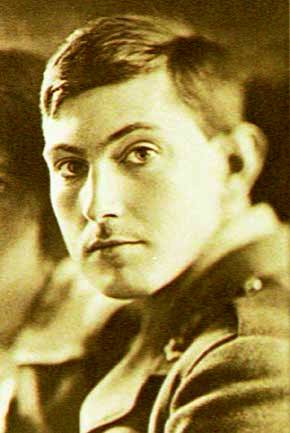'Because It's There'

On May 2, 1999, an expedition of climbers reported that they had found the frozen body of George L. Mallory, the leader of the 1924 British Mt. Everest expedition, at 26,800 feet on the North face of the mountain, where it apparently had lain for 75 years. When asked why he wanted to climb Everest, Mallory famously replied, "Because it's there." To his friends, he also revealed a fear of "drying up like a pea in its shell" if he were to turn his back from adventure.
Born on this day in 1886 in Mobberley, England, the son of a Cheshire parson, Mallory read history at Magdalen College Cambridge (where he befriended such budding talents as Rupert Brooke, Lytton Strachey, John Maynard Keynes and Duncan Grant, for whom he posed for paintings and photographs) and in 1910 he became a teacher at the Charterhouse School; but he was mountain-wild, climbing in the Alps and in Wales with every bit of spare time.
In 1921, Mt. Everest was a remote objective -- especially since the nations that it straddled, Tibet and Nepal, were closed to foreigners -- but after negotiating the appropriate permits, Mallory participated in a British reconnaissance mission on the North Col of Everest, climbing several nearby peaks to gain a sense of the climbing environment. Convinced there was a clear route on the North Col, in 1922, Mallory led an expedition back up the North Col, but it ended tragically as an avalanche overran the party, killing 7 sherpas.
He hesitated about going back in 1924 -- he had a new job at Cambridge and was enjoying married life -- but he was unable to resist the call of adventure. Thus it was that Mallory and another member of the British party, 22-year old Andrew Irvine, attempted to climb the North Col again in 1924, with the express aim of reaching Everest's summit.
As far as we know, Edmund Hillary was the first person to reach the summit of Everest (29 years later, along with Tenzing Norgay), and as Hillary descended, he mused "Wouldn't Mallory be pleased if he knew about this." Many have speculated, however, over whether Mallory and Irvine had actually reached the top before their disappearance, and while the discovery of Mallory's body yielded no clues, investigators still hope to find Irvine's body, and perhaps a camera with undeveloped film showing the summit. Hillary himself observed, however, "The point of climbing Everest should not be just to reach the summit. I'm rather inclined to think that maybe it's quite important, the getting down."
Everest veteran Reinhold Messner was opposed to the effort to find Mallory's body on the grounds that it robbed the climber of the air of mystery surrounding his achievements; and although he was also quite skeptical about whether Mallory was skilled enough to tackle the Second Step, the steep rock outcropping just near the summit, Messner refers to Mallory's expedition as a "masterpiece in the annals of high-altitude mountaineering," achieved in tweed coats and hobnailed boots as opposed to the modern equipment available to climbers today, and argues that all who have attempted Everest since owe him a debt of gratitude.
See also my previous post, Going Up is Optional, Getting Down is Mandatory.
Labels: Mountaineering, Nepal





0 Comments:
Post a Comment
Subscribe to Post Comments [Atom]
<< Home